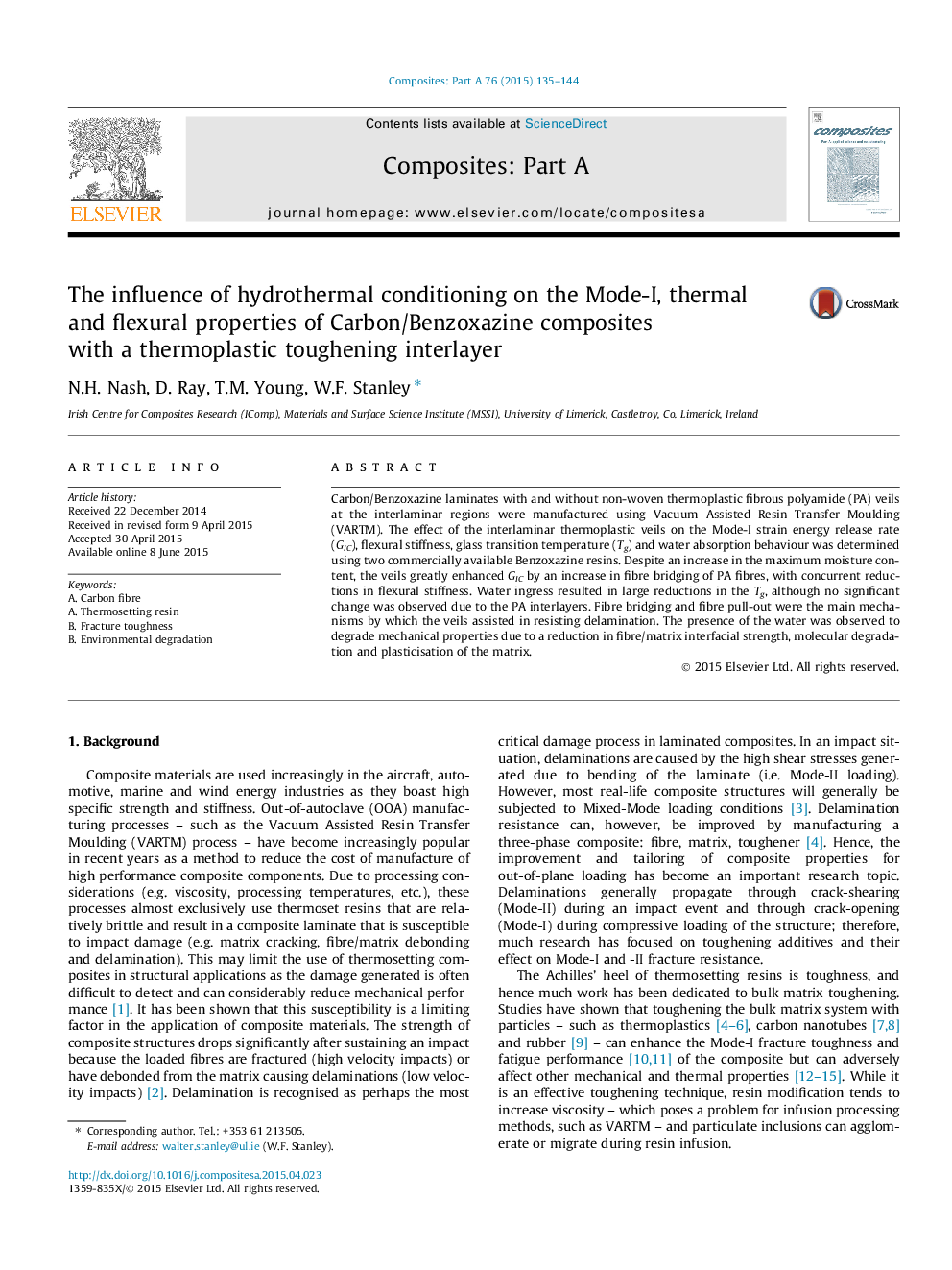| Article ID | Journal | Published Year | Pages | File Type |
|---|---|---|---|---|
| 7891616 | Composites Part A: Applied Science and Manufacturing | 2015 | 10 Pages |
Abstract
Carbon/Benzoxazine laminates with and without non-woven thermoplastic fibrous polyamide (PA) veils at the interlaminar regions were manufactured using Vacuum Assisted Resin Transfer Moulding (VARTM). The effect of the interlaminar thermoplastic veils on the Mode-I strain energy release rate (GIC), flexural stiffness, glass transition temperature (Tg) and water absorption behaviour was determined using two commercially available Benzoxazine resins. Despite an increase in the maximum moisture content, the veils greatly enhanced GIC by an increase in fibre bridging of PA fibres, with concurrent reductions in flexural stiffness. Water ingress resulted in large reductions in the Tg, although no significant change was observed due to the PA interlayers. Fibre bridging and fibre pull-out were the main mechanisms by which the veils assisted in resisting delamination. The presence of the water was observed to degrade mechanical properties due to a reduction in fibre/matrix interfacial strength, molecular degradation and plasticisation of the matrix.
Related Topics
Physical Sciences and Engineering
Materials Science
Ceramics and Composites
Authors
N.H. Nash, D. Ray, T.M. Young, W.F. Stanley,
